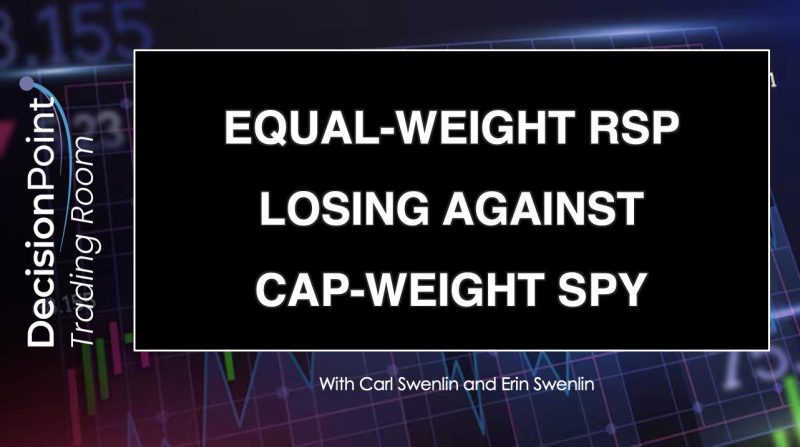In the increasingly complex world of trading and investing, market participants are constantly seeking out strategies that provide them with a competitive edge. One such strategy that has gained attention is the Equal Weight strategy, which aims to provide investors with a more diversified and potentially less risky portfolio compared to the more commonly used Cap Weight strategy. In this article, we will explore the differences between these two strategies and why Equal Weight may be losing ground against Cap Weight in the SPY market.
Starting with a basic understanding of these two strategies, it is essential to note that the Cap Weight strategy, also known as market capitalization weighting, is the most widely used approach in stock market indices such as the S&P 500. In this strategy, the weights of individual stocks within the index are determined by their market capitalization, with larger companies receiving higher weights. This means that the performance of the index is heavily influenced by the performance of a few large-cap stocks.
On the other hand, the Equal Weight strategy assigns equal weights to all stocks in the index, regardless of their market capitalization. This approach aims to provide investors with a more evenly distributed exposure to the overall market, reducing the concentration risk associated with large-cap stocks. Proponents of the Equal Weight strategy argue that this approach can lead to better diversification and potentially higher returns over the long term.
While the Equal Weight strategy has its merits, recent trends in the SPY market suggest that it may be losing ground against the Cap Weight strategy. One possible explanation for this phenomenon is the performance of mega-cap technology stocks, which have disproportionately driven the overall market returns in recent years. These large-cap stocks have significantly outperformed the broader market, leading to a situation where the Cap Weight strategy, with its heavy exposure to these stocks, has outperformed the Equal Weight strategy.
Furthermore, the Equal Weight strategy may face challenges during market downturns or periods of heightened volatility. In times of market stress, investors tend to flock to safer, more established companies, which are often the large-cap stocks that dominate the Cap Weight strategy. This flight to quality can lead to underperformance for the Equal Weight strategy, which may have a more balanced exposure across different market segments.
Despite these challenges, proponents of the Equal Weight strategy maintain that its emphasis on diversification and risk management can be beneficial in the long run. By spreading the risk more evenly across all stocks in the index, investors following the Equal Weight strategy may be better positioned to weather market turbulence and benefit from the eventual recovery of broader market segments.
In conclusion, while the Cap Weight strategy remains dominant in the SPY market, the Equal Weight strategy offers a compelling alternative for investors looking to achieve greater diversification and potentially higher returns over the long term. However, recent trends suggest that the Equal Weight strategy may be facing headwinds due to the outperformance of large-cap stocks. Ultimately, the choice between these two strategies depends on individual investor preferences, risk tolerance, and investment objectives.



























